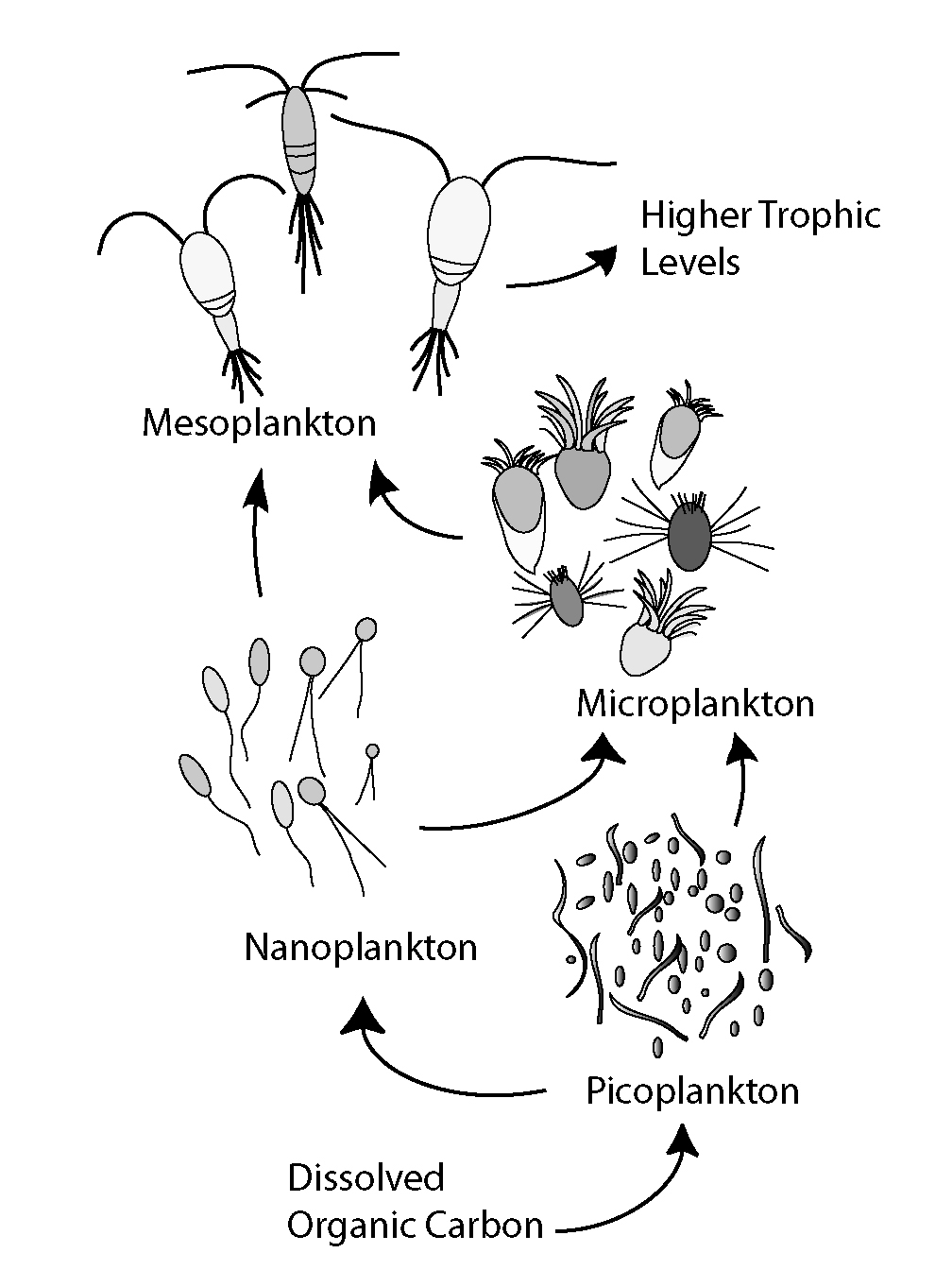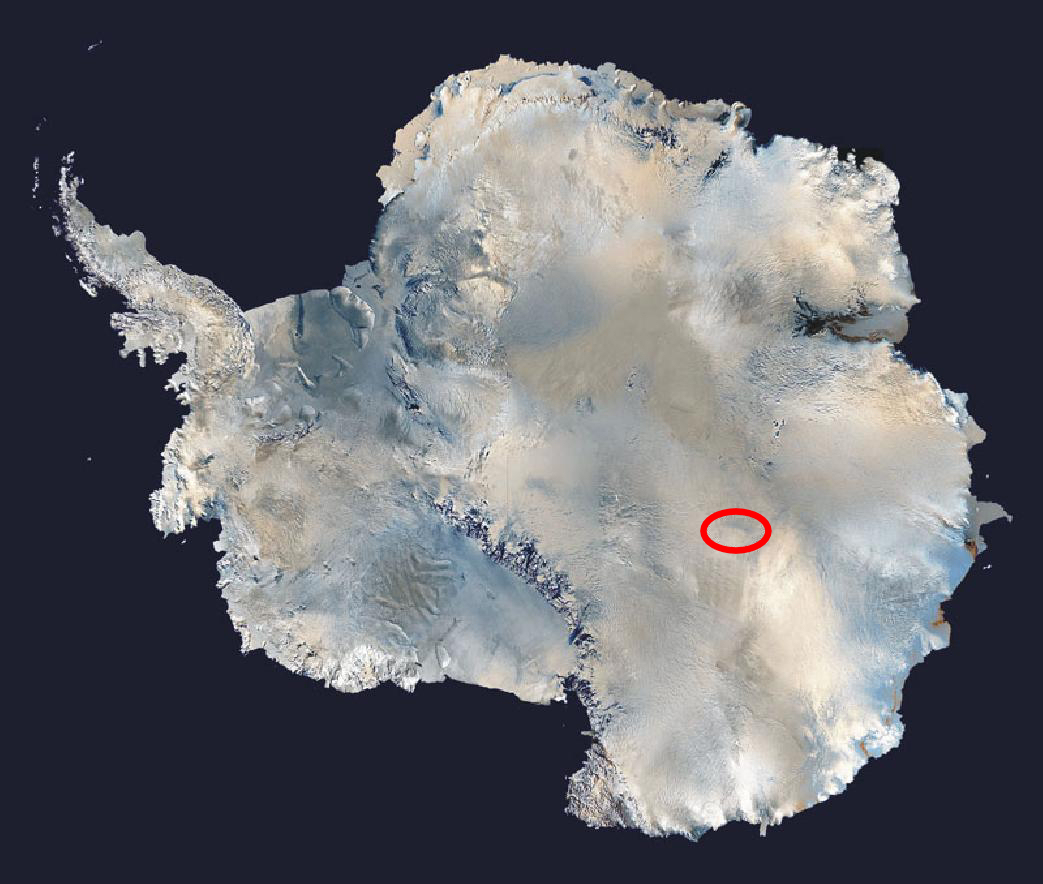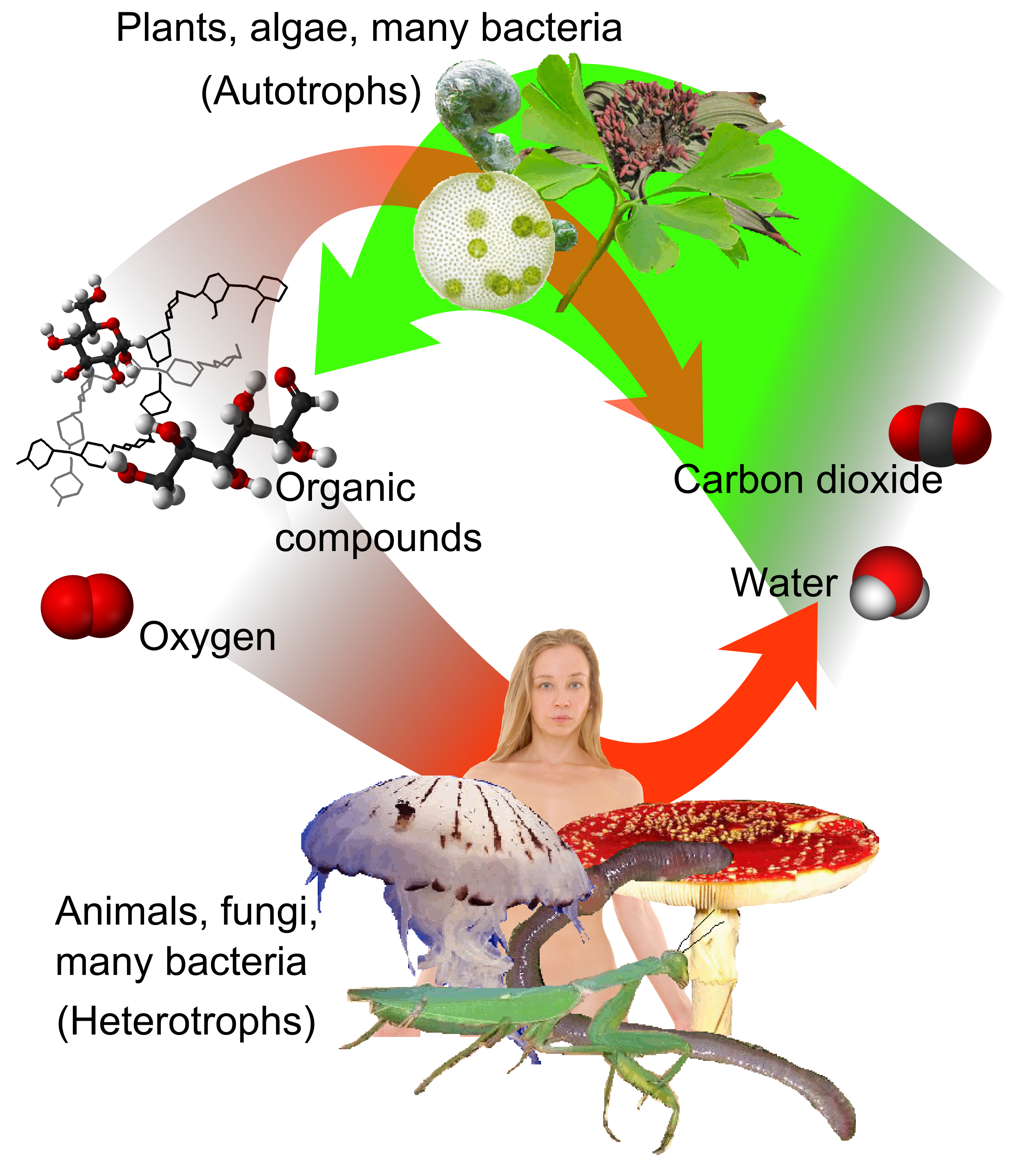|
Oligotroph
An oligotroph is an organism that can live in an environment that offers very low levels of nutrients. They may be contrasted with copiotrophs, which prefer nutritionally rich environments. Oligotrophs are characterized by slow growth, low rates of metabolism, and generally low population density. Oligotrophic environments are those that offer little to sustain life. These environments include deep oceanic sediments, caves, glacial and polar ice, deep subsurface soil, aquifers, ocean waters, and leached soils. Examples of oligotrophic organisms are the cave-dwelling olm; the bacterium " ''Candidatus'' Pelagibacter communis", which is the most abundant organism in the oceans with an estimated 2 × 1028 individuals in total; and the lichens with their extremely low metabolic rate. Etymologically, the word "oligotroph" is a combination of the Greek adjective ''oligos'' (ὀλίγος) meaning "few" and the adjective ''trophikos'' (τροφικός)) meaning "feeding". Plant adapta ... [...More Info...] [...Related Items...] OR: [Wikipedia] [Google] [Baidu] |
Microbial Loop
The microbial loop describes a trophic pathway where, in aquatic systems, dissolved organic carbon (DOC) is returned to higher trophic levels via its incorporation into bacterial biomass, and then coupled with the classic food chain formed by phytoplankton-zooplankton- nekton. In soil systems, the microbial loop refers to soil carbon. The term microbial loop was coined by Farooq Azam, Tom Fenchel et al. in 1983 to include the role played by bacteria in the carbon and nutrient cycles of the marine environment. In general, dissolved organic carbon (DOC) is introduced into the ocean environment from bacterial lysis, the leakage or exudation of fixed carbon from phytoplankton (e.g., mucilaginous exopolymer from diatoms), sudden cell senescence, sloppy feeding by zooplankton, the excretion of waste products by aquatic animals, or the breakdown or dissolution of organic particles from terrestrial plants and soils. Bacteria in the microbial loop decompose this particulate detritus ... [...More Info...] [...Related Items...] OR: [Wikipedia] [Google] [Baidu] |
Copiotrophs
A copiotroph is an organism found in environments rich in nutrients, particularly carbon. They are the opposite to oligotrophs, which survive in much lower carbon concentrations. Copiotrophic organisms tend to grow in high organic substrate conditions. For example, copiotrophic organisms grow in Sewage lagoons. They grow in organic substrate conditions up to 100x higher than oligotrophs. Classification and Identification The bacterial phyla can be differentiatied into copiotrophic or oligotrophic categories that correspond and structure the functions of soil bacterial communities. Interaction with other organisms Copiotrophic relation between oligotrophic bacteria depends on the amount of concentration the soil has of C compounds. If the soil has large amounts of organic C, it would then favor the copiotrophic bacteria. Ecology Copiotrophic bacteria are a key component in the soil C cycle. It is most important during the period of the year when vegetation is photosy ... [...More Info...] [...Related Items...] OR: [Wikipedia] [Google] [Baidu] |
Candidatus Pelagibacter Communis
"''Candidatus'' Pelagibacter", with the single species "''Ca.'' P. communis", was isolated in 2002 and given a specific name, although it has not yet been described as required by the bacteriological code. It is an abundant member of the SAR11 clade in the phylum ''Alphaproteobacteria''. SAR11 members are highly dominant organisms found in both salt and fresh water worldwide and were originally known only from their rRNA genes, first identified in the Sargasso Sea in 1990 by Stephen Giovannoni's laboratory at Oregon State University and later found in oceans worldwide. "''Ca.'' P. communis" and its relatives may be the most abundant organisms in the ocean, and quite possibly the most abundant bacteria in the entire world. It can make up about 25% of all microbial plankton cells, and in the summer they may account for approximately half the cells present in temperate ocean surface water. The total abundance of "''Ca.'' P. communis" and relatives is estimated to be about 2 ×& ... [...More Info...] [...Related Items...] OR: [Wikipedia] [Google] [Baidu] |
Lake Vostok
Lake Vostok (russian: озеро Восток, ''ozero Vostok'') is the largest of Antarctica's almost 400 known subglacial lakes. Lake Vostok is located at the southern Pole of Cold, beneath Russia's Vostok Station under the surface of the central East Antarctic Ice Sheet, which is at above mean sea level. The surface of this fresh water lake is approximately under the surface of the ice, which places it at approximately below sea level. Measuring long by wide at its widest point, it covers an area of making it the 16th largest lake by surface area. With an average depth of , it has an estimated volume of , making it the 6th largest lake by volume. The lake is divided into two deep basins by a ridge. The liquid water depth over the ridge is about , compared to roughly deep in the northern basin and deep in the southern. The lake is named after Vostok Station, which in turn is named after the '' Vostok'' (Восток), a sloop-of-war, which means "East" in Russian ... [...More Info...] [...Related Items...] OR: [Wikipedia] [Google] [Baidu] |
Ankistrodesmus
''Ankistrodesmus'' is a genus of green algae in the family Selenastraceae Selenastraceae is a family of green algae The green algae (singular: green alga) are a group consisting of the Prasinodermophyta and its unnamed sister which contains the Chlorophyta and Charophyta/Streptophyta. The land plants (Embryophytes .... Species * '' A. acerosus'' * '' A. acutissimus'' * '' A. amalloides'' * '' A. antarcticus'' * '' A. arcticus'' * '' A. bernardensis'' * '' A. bernardii'' * '' A. caribeum'' * '' A. chlorogonioides'' * '' A. cucumiformis'' * '' A. densus'' * '' A. dulcia'' * '' A. dybowskii'' * '' A. ecsediensis'' * '' A. extensus'' * '' A. falcatus'' * '' A. falciformia'' * '' A. fasciculatus'' * '' A. flexuosus'' * '' A. fractus'' * '' A. fusiformis'' * '' A. gracilis'' * '' A. hindakii'' * '' A. komarekii'' * '' A. lacuster'' * '' A. marinus'' * '' A. minutus'' * '' A. nannoselene'' * '' A. nivalis'' * '' A. pehrii'' * '' A. polymorphus'' * '' A. pseudosabulosum'' * '' A. ... [...More Info...] [...Related Items...] OR: [Wikipedia] [Google] [Baidu] |
Ochromonas
''Ochromonas'' is a genus of algae belonging to the family Chromulinaceae. The genus has cosmopolitan distribution. Chlorosulfolipids, a class of biologically active compounds, was first discovered in some ''Ochromonas'' species. Species Accepted species: *''Ochromonas bourrellyi'' *''Ochromonas carolina'' *''Ochromonas cosmopoliticus'' (?) *''Ochromonas crenata'' (?) *''Ochromonas danica'' *''Ochromonas elegans'' *''Ochromonas globosa'' *''Ochromonas granularis'' *''Ochromonas lubibunda'' *''Ochromonas malhamensis'' (?) *''Ochromonas minima'' *''Ochromonas minuta'' *''Ochromonas marina'' (?) *'' Ochromonas mutabilis'' *''Ochromonas nana'' *''Ochromonas oblonga'' *''Ochromonas ostreaeformis ''Ochromonas'' is a genus of algae belonging to the family Chromulinaceae. The genus has cosmopolitan distribution. Chlorosulfolipids, a class of biologically active compounds, was first discovered in some ''Ochromonas'' species. Species Acce ...'' *'' Ochromonas oval ... [...More Info...] [...Related Items...] OR: [Wikipedia] [Google] [Baidu] |
Chlamydomonas
''Chlamydomonas'' is a genus of green algae consisting of about 150 speciesSmith, G.M. 1955 ''Cryptogamic Botany Volume 1. Algae and Fungi'' McGraw-Hill Book Company Inc of unicellular flagellates, found in stagnant water and on damp soil, in freshwater, seawater, and even in snow as "snow algae". ''Chlamydomonas'' is used as a model organism for molecular biology, especially studies of flagellar motility and chloroplast dynamics, biogenesis, and genetics. One of the many striking features of ''Chlamydomonas'' is that it contains ion channels ( channelrhodopsins) that are directly activated by light. Some regulatory systems of ''Chlamydomonas'' are more complex than their homologs in Gymnosperms, with evolutionarily related regulatory proteins being larger and containing additional domains. Molecular phylogeny studies indicated that the traditional genus ''Chlamydomonas'' as defined using morphological data was polyphyletic within Volvocales. Many species were subsequen ... [...More Info...] [...Related Items...] OR: [Wikipedia] [Google] [Baidu] |
Scourfieldia
''Scourfieldia'' is a genus of green algae in the family Scourfieldiaceae. ''Cardiomona'' Korshikov is an invalid synonym. The genus was circumscribed by George Stephen West in J. Bot. vol.50 on page 326 in 1912. The genus name of ''Scourfieldia'' is in honour of David Joseph Scourfield FLS FRMS ISO (1866–1949), who was a British civil servant and biologist known as an authority on the Cladocera. Species ''Scourfieldia'' contains the following species:John, David M., Whitton, Brian A., & Brook, Alan J. (Eds). ''The Freshwater Algal Flora of the British Isles: An Identification Guide to Freshwater and Terrestrial Algae.'' Cambridge, UK: Cambridge University Press, 2005. 286. * ''Scourfieldia caeca'' (Korshikov) J.H.Belcher & Swale, 1963 * ''Scourfieldia complanata'' G. S. West, 1912 * ''Scourfieldia cordiformis'' Takeda, 1916 WoRMS also accepts; * ''Scourfieldia chlorolateralis'' * ''Scourfieldia conica'' * ''Scourfieldia ovata'' * ''Scourfieldia quadrata'' Form ... [...More Info...] [...Related Items...] OR: [Wikipedia] [Google] [Baidu] |
Cryptomonas
''Cryptomonas'' is the name-giving genus of the Cryptomonads established by German biologist Christian Gottfried Ehrenberg in 1831. The algae are common in freshwater habitats and brackish water worldwide and often form blooms in greater depths of lakes. The cells are usually brownish or greenish in color and are characteristic of having a slit-like furrow at the anterior. They are not known to produce any toxins. They are used to feed small zooplankton, which is the food source for small fish in fish farms. Many species of ''Cryptomonas'' can only be identified by DNA sequencing. ''Cryptomonas'' can be found in several marine ecosystems in Australia and South Korea. Etymology ''Cryptomonas'' has the meaning of hidden small flagellates from “crypto” and “monas”. Genome Structure Species within ''Cryptomonas'' contain four genomes: the nuclear, the nucleomorph, the plastid, and mitochondrial genomes. The plastid genome contains 118 kilobase pairs and is a result of ... [...More Info...] [...Related Items...] OR: [Wikipedia] [Google] [Baidu] |
Organism
In biology, an organism () is any life, living system that functions as an individual entity. All organisms are composed of cells (cell theory). Organisms are classified by taxonomy (biology), taxonomy into groups such as Multicellular organism, multicellular animals, plants, and fungi; or Unicellular organism, unicellular microorganisms such as protists, bacteria, and archaea. All types of organisms are capable of reproduction, Developmental biology, growth and development, homeostasis, maintenance, and some degree of response to Stimulus (physiology), stimuli. Beetles, squids, tetrapods, mushrooms, and vascular plants are examples of multicellular organisms that Cellular differentiation, differentiate specialized tissue (biology), tissues and organ (anatomy), organs during developmental biology, development. A unicellular organism may be either a prokaryote or a eukaryote. Prokaryotes are represented by two separate Three-domain system, domains – bacteria and arc ... [...More Info...] [...Related Items...] OR: [Wikipedia] [Google] [Baidu] |
Autotrophic
An autotroph or primary producer is an organism that produces complex organic compounds (such as carbohydrates, fats, and proteins) using carbon from simple substances such as carbon dioxide,Morris, J. et al. (2019). "Biology: How Life Works", 3rd edition, W. H. Freeman. generally using energy from light (photosynthesis) or inorganic chemical reactions (chemosynthesis). They convert an abiotic source of energy (e.g. light) into energy stored in organic compounds, which can be used by other organisms (e.g. heterotrophs). Autotrophs do not need a living source of carbon or energy and are the producers in a food chain, such as plants on land or algae in water (in contrast to heterotrophs as consumers of autotrophs or other heterotrophs). Autotrophs can reduce carbon dioxide to make organic compounds for biosynthesis and as stored chemical fuel. Most autotrophs use water as the reducing agent, but some can use other hydrogen compounds such as hydrogen sulfide. The primary ... [...More Info...] [...Related Items...] OR: [Wikipedia] [Google] [Baidu] |



